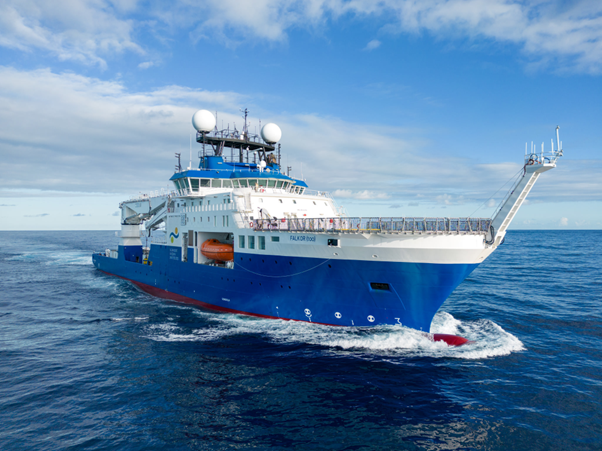An international team of scientists has been the first to film the colossal squid (Mesonychoteuthis hamiltoni) in its natural environment. The juvenile squid was captured on video at a depth of 600 metres by the Schmidt Ocean Institute’s remotely operated vehicle. The sighting occurred on March 9 on an expedition near the South Sandwich Islands in the South Atlantic Ocean. This year is the 100-year anniversary of the identification and formal naming of the colossal squid, a member of the glass squid family (Cranchiidae).
The colossal squid, Mesonychoteuthis hamiltoni, in its natural habitat. Photo: Schmidt Ocean Institute
Colossal squid can grow up to seven metres and weigh as much as 500 kilograms, making them the heaviest invertebrate on the planet. But little is known about their life cycle.
Kat Bolstad, Associate Professor of Environmental Science, Auckland University of Technology, wrote in The Conversation that ‘not only do these animals live in an enormous, dark and three-dimensional environment, they are also probably actively avoiding us.
Most of our deep-sea exploration equipment is large, noisy and uses bright lights if we are trying to film animals. But the colossal squid can detect and avoid diving sperm whales, which probably produce a strong light signal as they swim down and disturb bioluminescent animals.
The squid best able to avoid such predators have been passing on their genes for millions of years. This leaves us with a current population of visually acute, likely light-avoiding animals, well capable of detecting a light signal from many metres away.’
The research voyage was exploring the far south Atlantic ocean in search of new species and habitats. Photo: Schmidt Ocean Institute
“It’s exciting to see the first in situ footage of a juvenile colossal and humbling to think that they have no idea that humans exist,” said Dr. Bolstad, one of the independent scientific experts the team consulted to verify the footage. “For 100 years, we have mainly encountered them as prey remains in whale and seabird stomachs and as predators of harvested toothfish.”
The video of the colossal squid can be seen on the Guardian here.

